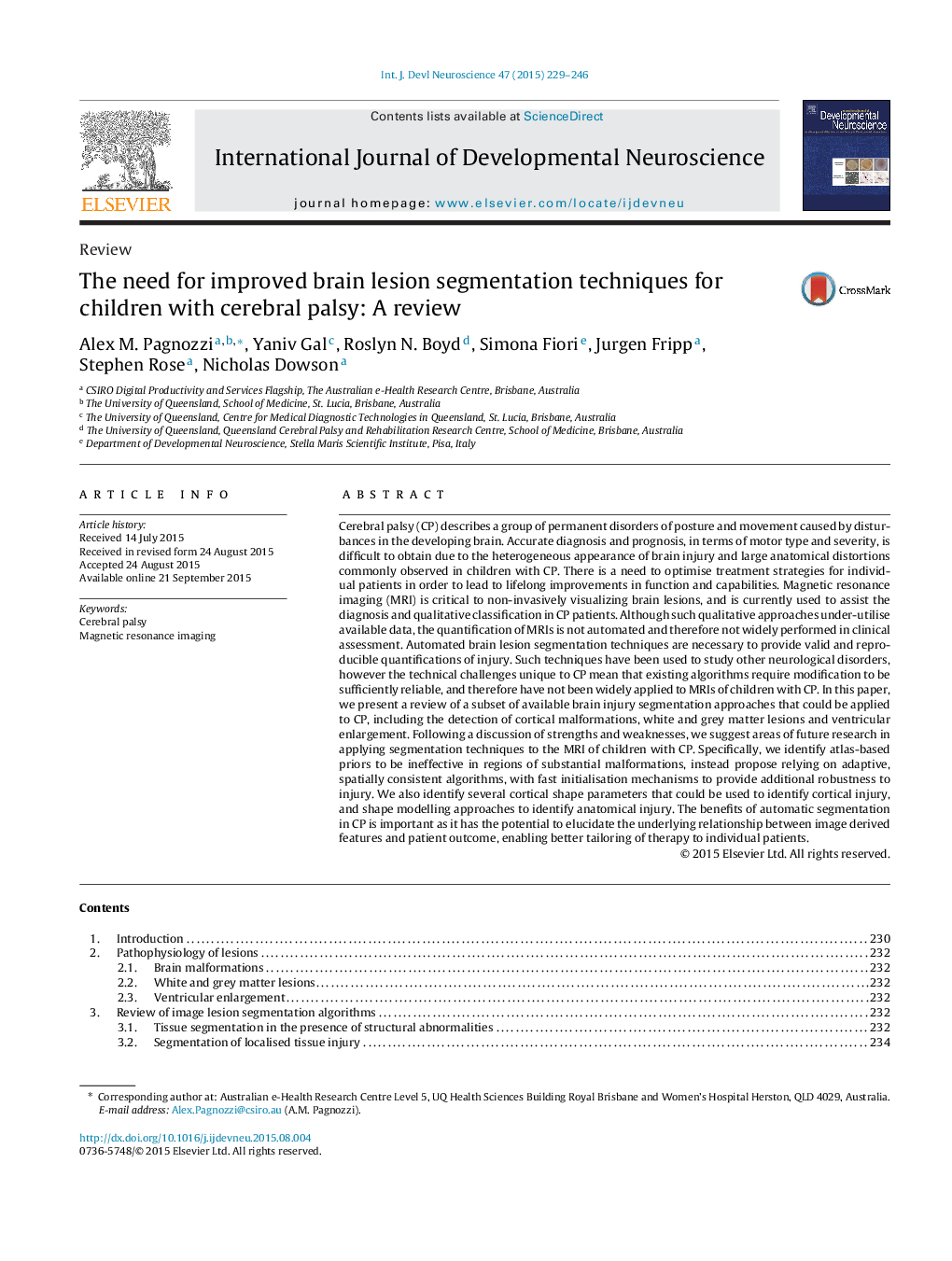| کد مقاله | کد نشریه | سال انتشار | مقاله انگلیسی | نسخه تمام متن |
|---|---|---|---|---|
| 2785640 | 1568383 | 2015 | 18 صفحه PDF | دانلود رایگان |
• Provides a review on brain lesion segmentation techniques applicable to lesion detection in cerebral palsy.
• Proposes several modifications to existing segmentation techniques to provide robustness to injury.
• Recommends multiple, specific lesion segmentation approaches for each type of brain lesion.
• Highlights the need for automated approaches in clinical assessment to optimise treatment strategies.
Cerebral palsy (CP) describes a group of permanent disorders of posture and movement caused by disturbances in the developing brain. Accurate diagnosis and prognosis, in terms of motor type and severity, is difficult to obtain due to the heterogeneous appearance of brain injury and large anatomical distortions commonly observed in children with CP. There is a need to optimise treatment strategies for individual patients in order to lead to lifelong improvements in function and capabilities. Magnetic resonance imaging (MRI) is critical to non-invasively visualizing brain lesions, and is currently used to assist the diagnosis and qualitative classification in CP patients. Although such qualitative approaches under-utilise available data, the quantification of MRIs is not automated and therefore not widely performed in clinical assessment. Automated brain lesion segmentation techniques are necessary to provide valid and reproducible quantifications of injury. Such techniques have been used to study other neurological disorders, however the technical challenges unique to CP mean that existing algorithms require modification to be sufficiently reliable, and therefore have not been widely applied to MRIs of children with CP. In this paper, we present a review of a subset of available brain injury segmentation approaches that could be applied to CP, including the detection of cortical malformations, white and grey matter lesions and ventricular enlargement. Following a discussion of strengths and weaknesses, we suggest areas of future research in applying segmentation techniques to the MRI of children with CP. Specifically, we identify atlas-based priors to be ineffective in regions of substantial malformations, instead propose relying on adaptive, spatially consistent algorithms, with fast initialisation mechanisms to provide additional robustness to injury. We also identify several cortical shape parameters that could be used to identify cortical injury, and shape modelling approaches to identify anatomical injury. The benefits of automatic segmentation in CP is important as it has the potential to elucidate the underlying relationship between image derived features and patient outcome, enabling better tailoring of therapy to individual patients.
Figure optionsDownload high-quality image (171 K)Download as PowerPoint slide
Journal: International Journal of Developmental Neuroscience - Volume 47, Part B, December 2015, Pages 229–246
